|
My favorite blogger and my inspiration in many things is Leimomi Oakes. For years, she has done regular historical sewing challenges designed to help people get out of sewing ruts, finish UFOs (UnFinished Objects!), and learn more about historical sewing. This is the first year I've participated. Given my current scattered set of sewing goals, and how few of them are historical, I found January's challenge somewhat... challenging. "January: Firsts & Lasts – Create either the first item in a new ensemble, or one last piece to put the final fillip on an outfit." Thing is, I haven't been making ensembles lately. But as I thought on it, I realized that I have been very interested in nightwear. Less likely than the "Sunday best" to be portrayed in art or accurately represented in film, nevertheless nightwear is a fascinating niche of historical costume research. Well, think about it: if someone from the future asked what people nowadays wear to bed, who could give them a single definitive answer? Some people sleep au naturel, others wear underwear, others pajamas or nylon slips or what have you. Doesn't the answer largely depend on the person? Their taste, their needs, how cold their house is? Same goes for historical clothing, surely. Maybe some people would strip it all off... although they might not admit it publicly. Some might wear their most basic linen garment, their underwear, which might be shift or chemise or sark... Some might have elaborate nightgowns and nightcaps, covered with frills. (I've always rather enjoyed the scene in Coppola's Marie Antoinette (2006) where the princess attempts to entice her husband by slipping into a "sexy" nighty that would be ludicrously prudish in our time! But her hair is down and her shoulders bare. A spritz of perfume and to bed! He is not enticed, but it isn't the nighty's fault.) I actually wear a nightcap. In my case it's a practical garment. I have trichotillomania (compulsive hair pulling), and I find that at nighttime, as I'm drifting to sleep, I need to put my hair out of reach of my fingers. If it's off my face and covered, I won't pull it. I made a simple flannel nightcap one cold winter, all hand-stitched, based on my foggy memories of how coifs were made. My flannel nightcap has a wide flat brim that covers the top of my head (which I like), a bag at the back to hold the hair, and little tabs at the bottom of the brim that that I pull back to the nape of my neck and pin in place with bobby pins. Two bobby pins set in an X usually stay put all night, but the top of the cap doesn't, so sometimes I wake to find my head uncovered, and an awkward lump of flannel hanging off my nape! I have a Pinterest board devoted to coifs and caps, and I'm always intrigued by how much personality is conveyed by a few scraps of muslin, a linen strip, a ruffle, some lace... in their heyday, nightcaps would perhaps have been the perfect example of a personal item that exactly suited the taste and personality of the wearer. Women probably made their own, or sought out caps that suited their particular nighttime needs. Lots of hair? Make a bigger bag. A young wife? Something flirty and sweet. Are you cold at night? Quilting. And the personality of the woman in the profusely frilled cap would obviously be different from that of the woman in the crisp one decorated with pin-tucks. For myself, I like a wee ruffle here and there, but would feel ridiculous in something too Mrs. Bennet-like! (Think of that scene in the A&E version where she's prostrated by Lydia's elopement... "I have such spasms and flutterings that I can get no rest either night or day!" punctuated by a quiver of handkerchief-weight linen!) So I begin to think I ought to research nightclothes and perhaps make myself a nighttime "ensemble". I picked a character and an era: Dorothy Stanbury of Trollope's He Knew He Was Right... what might she wear to bed? And this month I started the ensemble with her nightcap. DOROTHY STANBURYTrollope published his novel in 1869. The character of Dorothy Stanbury, however, is not exactly up to date. She and her mother and sister exhibit "genteel poverty"... too ladylike to do the menial labor open to the lower classes, but too poor to live well or marry well. They are supported in meager style by Dorothy's brother Hugh, who writes for a penny paper. Moreover, Dorothy is a meek person, conservative in her dress; a point of approbation for her aunt, who will not sponsor her if she has false hair or other fashionable affectations. Therefore, I feel comfortable putting Dorothy in a nightcap from 1850, even if it is old-fashioned. Any resources she might devote to updating her wardrobe would surely go to her bonnets or dresses, not her nightwear. This is my main inspiration in the Metropolitan Museum of Art. I like the shape of it, with the brim and bag construction. I like the tucks on the brim and the pin-tucks on the ruffle. It seems like something Dorothy would like. Despite her limited money, she is still a young woman. And despite her modesty as regards her own charms, she must still hope to be pretty, if only in private. PLANNINGA few swipes of measuring tape to head and a few scribbles sufficed for planning. I wonder if the ladies of the Stanbury house would have bothered measuring or making a pattern, or if they would have simply held fabric up to head and eye-balled things. For fabric, I dug through stash and found a bit of semi-sheer curtain fabric that looks like cotton but has a synthetic component (there's some melting at the selvedge). SEWING THE BRIMAfter finishing the brim, I took another look at the coif in the Met and realized that while it was my instinct to have the tucks facing backward (I assumed my rolled hem would be the front of the hat), the original has them facing forward. I wonder why. Given that the tucks are decorative in this case, I guess it's a matter of preference. In the interest of historical recreation, I decided to turn my brim around to match the original. So now my tucks face the front. ATTACHING BAG TO BRIM
To make my pieces a cap, I used a running stitch to gather the arch of the bag, and pinned it to the brim with the two rolled hems on top of each other. I used a running stitch to hold the lapped edges together where they were both flat, and switched to a backstitch when I hit the gathers, so that I could catch all the folds in my stitching! THE RUFFLEThe five pictures above show some of the steps of making the ruffle. First I cut a long rectangle. The inspiration cap did not have a very full ruffle, so nor did I. I hemmed the edge with a rolled hem. I don't have pictures of the next step--making the pin tucks--but they were simply done by folding the ruffle down, ironing a crease, then making a single line of running stitches right next to the crease. When I ironed the ruffle open again, the crease became a pin tuck. Then I sewed the ruffle to the cap with running stitches, ironed it and turned the raw edges under, and flat felled it with backstitches. Finally, I added ties to the bottom of the brim, and I was done! COMPARISONThe biggest differences are in construction. Closer looks at the original show a surprising number of time-consuming details that I did not even notice or replicate. For instance, I think there's piping at the seam joining bag to brim. There's an insertion of embroidery. And the bag piece seems to have a small sliver that extends under the ear-area of the brim (why?). And the ruffle is in several pieces, with the back only having a hem and a pin tuck, and the front having a hem and two pin tucks. The back has no drawstrings; it's just cut smaller than mine. I can't quite tell if the original is machine sewn or hand sewn. Mine is all hand sewn, with no piping, messy tucks, and no ruffle around the back. The original ties look to be woven tape and are sewn over the ruffle. Mine are made of the same fabric as the cap, and are sewn under the ruffle, to the inside of the cap. The Challenge: January: Firsts & Lasts – Create either the first item in a new ensemble, or one last piece to put the final fillip on an outfit.
Material: Something synthetic, because there was a little meltiness in the selvedge. Pattern: none. Year: based on an 1850 nightcap at the Met Notions: none. How historically accurate is it? In fabric, not at all. In construction method, probably 80%. The original is better made and more complex. Hours to complete: approx 15 hours (several nights of work) First worn: to bed the night I finished it! It stayed on all night, so it's my new nightcap of choice! Total cost: zilch
3 Comments
Leave a Reply. |
Karen Roy
Quilting, dressmaking, and history plied with the needle... Sites I EnjoyThe Quilt Index Categories
All
Archives
March 2024
|
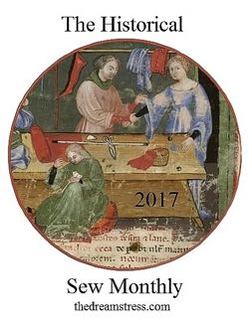
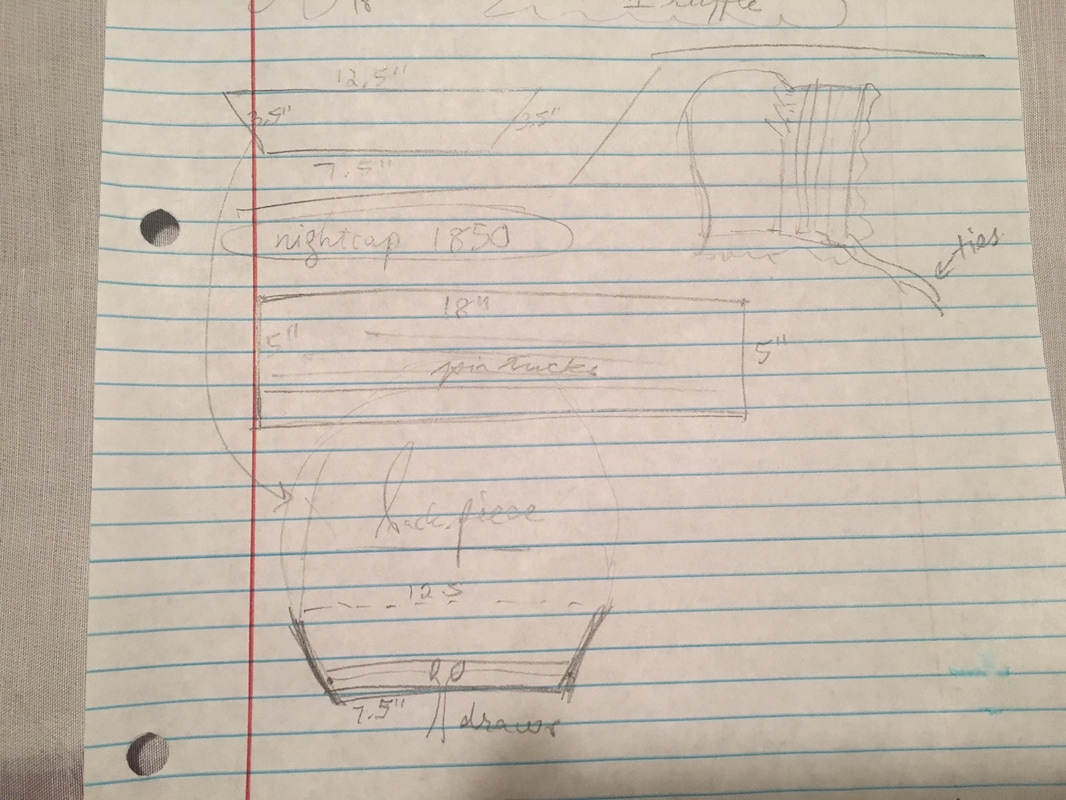
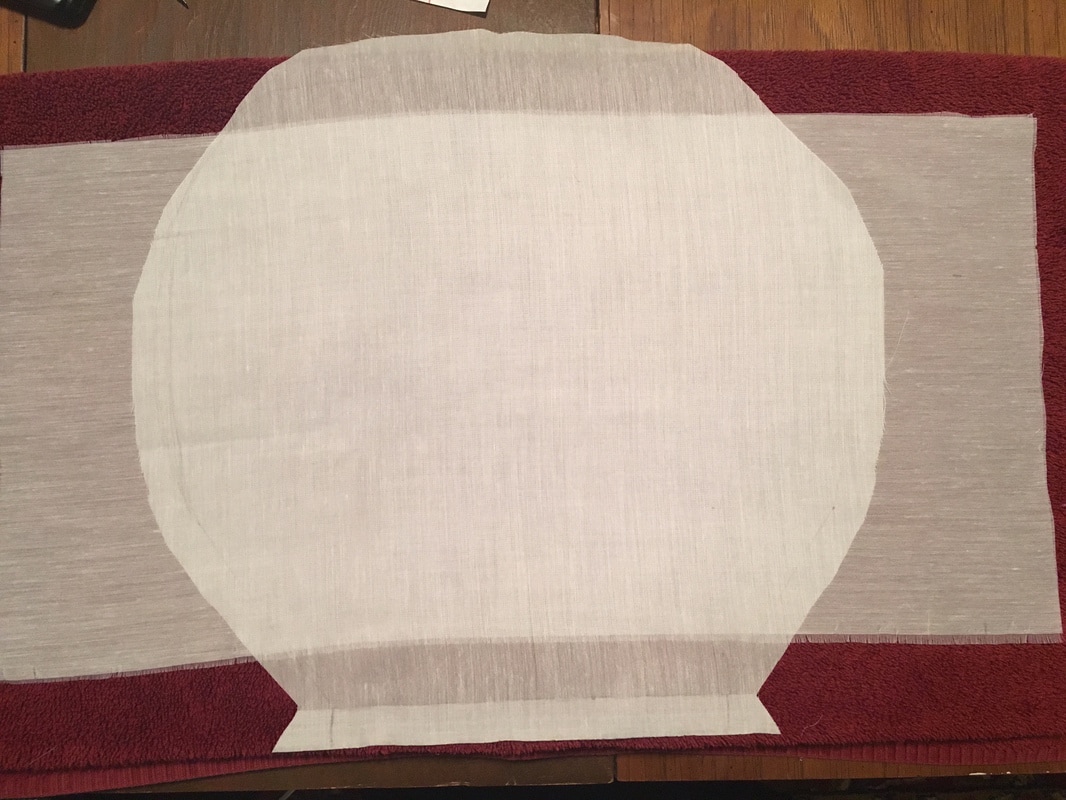
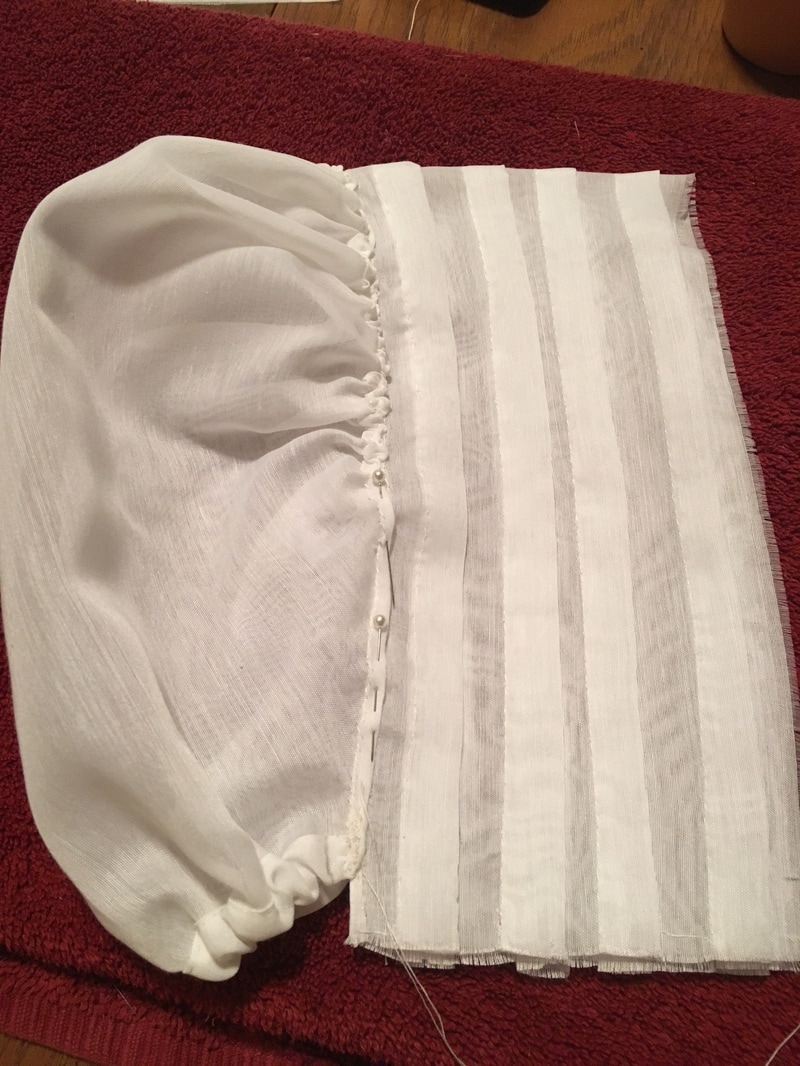
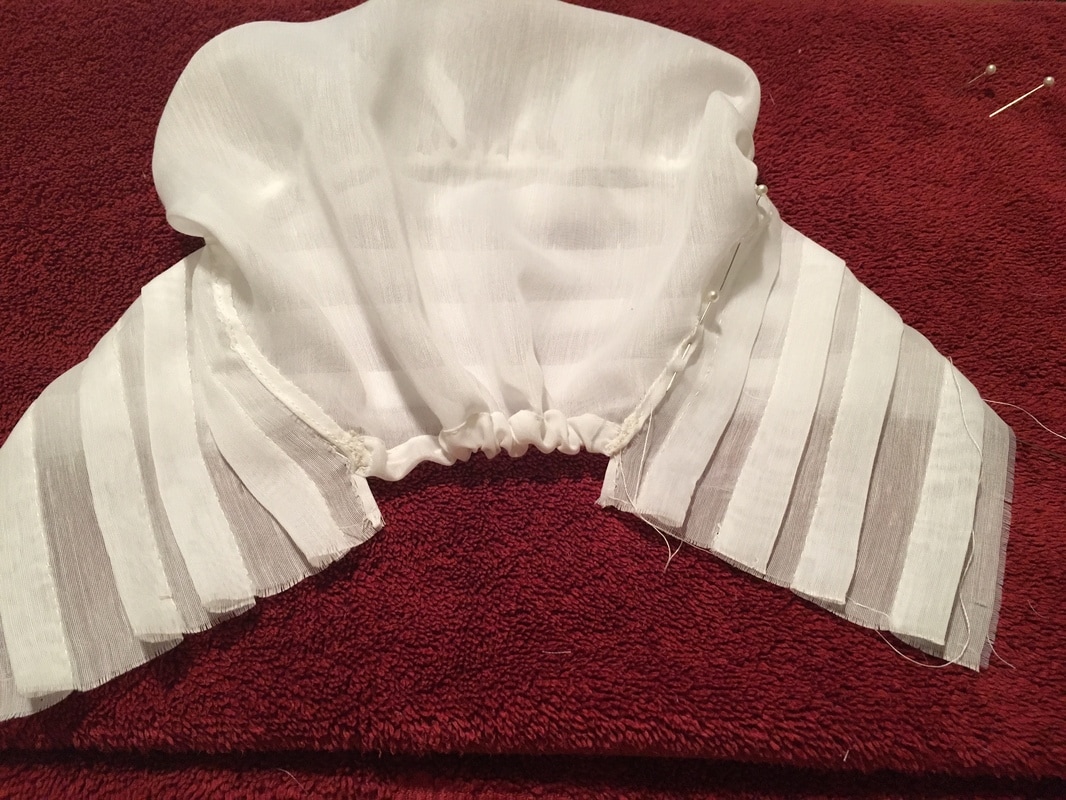
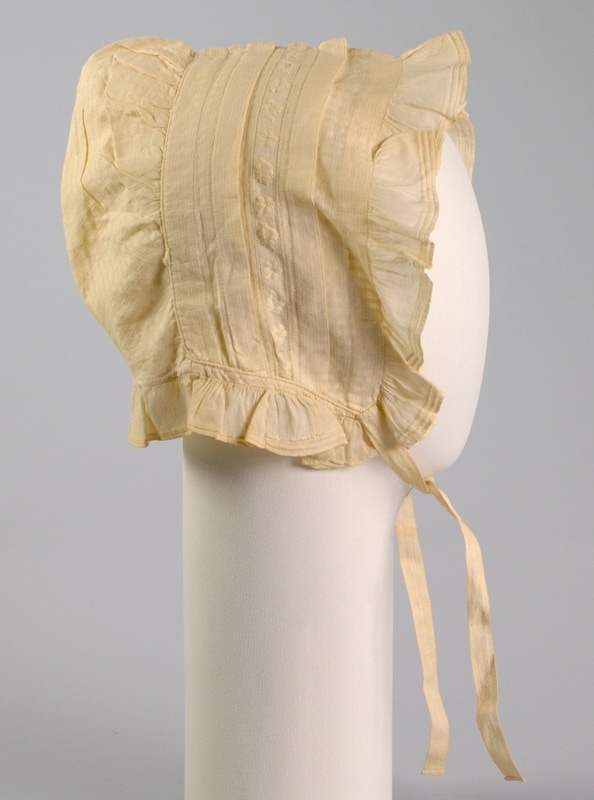
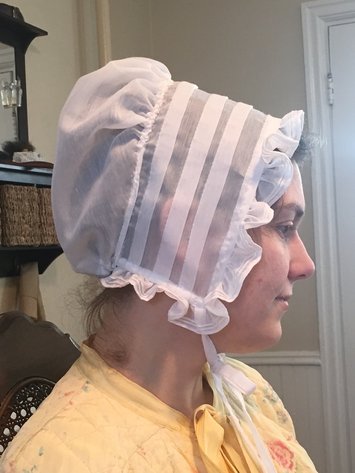
 RSS Feed
RSS Feed